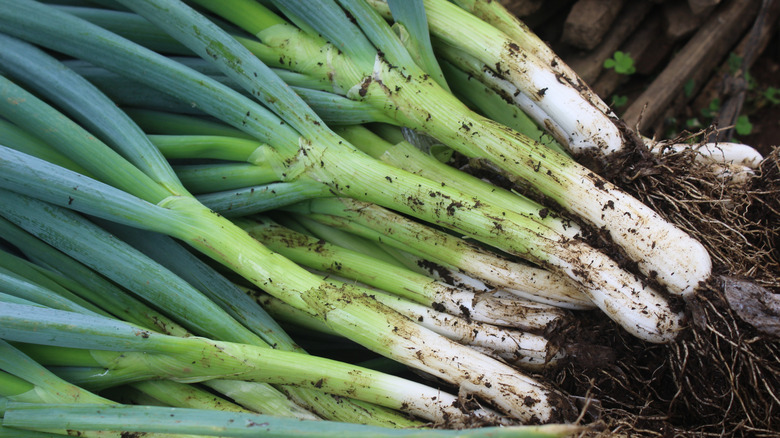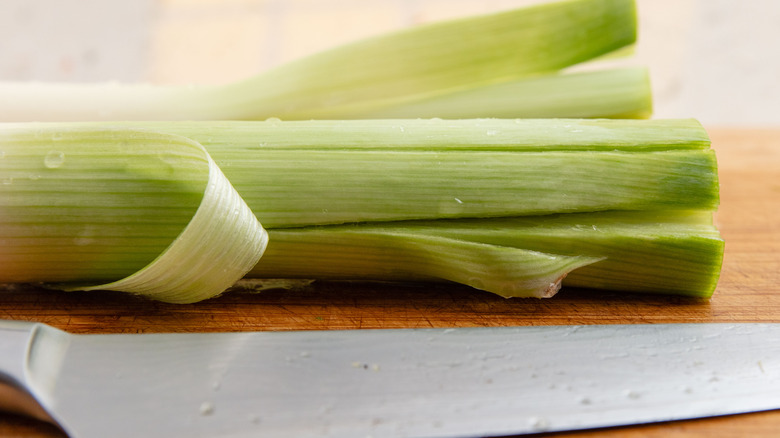The Simple Trick To Remove All Grit From Leeks When Washing
For one of my first-ever writing gigs, I had to write an article on chopping leeks. But I was a fraud: I'd never chopped a leek in my life. With no time for a Kroger run, I delved into my research. Every article I read discussed dirt. Apparently, leeks are the vegetable equivalent of Peanuts' Pigpen. "They can't be that bad," I thought. But I was wrong: When I finally chopped my first leek, it was just as dirty as the blogs described — if not more so. Washing it was a massive pain in the butt.
Leeks grow in sandy, silty soil. To make sure there's plenty of tender white stalk, farmers use a technique called blanching. Blanching involves piling dirt around the plant as it grows. It's a necessary step. Without blanching, most of the vegetable would be tough and inedible. However, as the leeks grow — layer by layer — all that dirt gets trapped inside. Since the dirt is essentially embedded in the leek itself, it's impossible to thoroughly clean the vegetable without cutting it. Scrubbing the outside isn't enough.
Often, you'll see cooks cut leeks into rings, separate the layers, and wash them in a bowl. But there's a simpler, more thorough method. Cut off the green top (you can use them for homemade stock) but leave the roots mostly intact. Then, cut the leek lengthwise and fan out the layers for a thorough clean. The hack is Martha Stewart-approved – the star uses it for her braised leeks and you should too.
The easiest way to clean leeks
Peeling back the layers saves time since rinsing a fanned-out leek is easier than sorting through lots of little pieces. If you need small pieces, cutting the leek into quarters is easy. Once the leek is clean, cut it crosswise for bite-size bits. Want an extra-thorough clean? Put the pieces in a bowl of water and swish them around — the leaves will stay on top while any residual dirt sinks to the bottom. Scoop out the floating leaves and give them a final rinse. They'll be squeaky-clean and ready for soup.
The method has another perk, too. By keeping the layers connected at the root, you can serve roasted, braised, or grilled leeks (mostly) whole. For smaller leeks, you may only need a single lengthwise slice. Once your leeks are nice and clean, you're free to use them however you want. Use them to make the world's oldest recipe. Use them to make French Fries and Frosty, a potato leek soup and ice cream crossover. (Yes, really — it's Michelin-starred chef Phillip Foss' signature dish.) Or use them to come up with something new. The best part? You won't have to pick grit out of your teeth.

